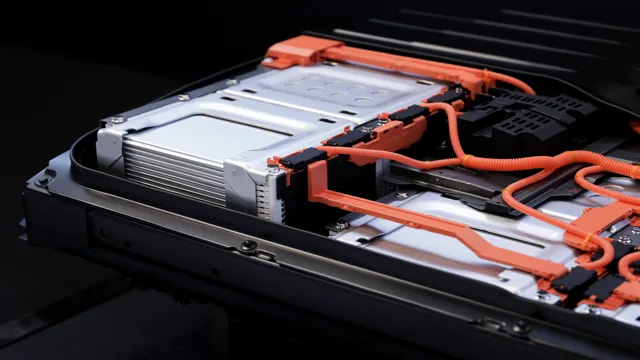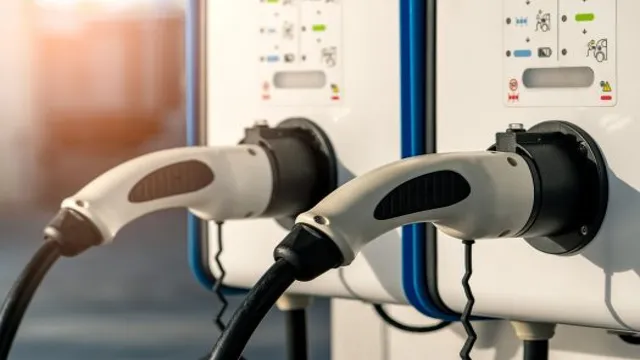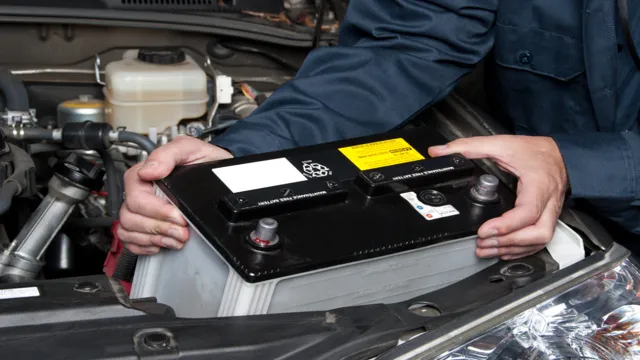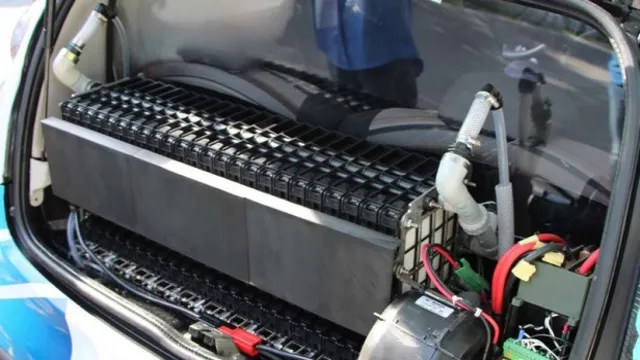Revolutionize your Energy Usage with Electric Cars as House Batteries: A Sustainable Solution
Have you ever thought about your electric car being more than just a mode of transportation? What if it could also serve as your house battery? That’s right, you can use your electric car as a power source for your home. It’s not just a futuristic idea – it’s becoming a reality for many homeowners. With the rising costs of electricity and the push towards a greener lifestyle, more and more people are looking into this innovative solution.
Let’s dive into the benefits and logistics of using your electric car as a house battery.
Benefits of Using an Electric Car as a House Battery
If you’re looking for an innovative way to store energy for your home, consider using your electric car as a house battery. Not only can an electric car act as a cost-effective energy storage solution for your home, but it also has many benefits. For instance, electric cars already have a lot of battery capacity, so they can offer substantial energy backup in case of a power outage or emergencies.
Additionally, an electric car as a house battery can reduce your electric bills by charging during off-peak hours and discharging during peak hours when electricity rates are high. Moreover, you can even sell your excess stored energy back to the grid. In other words, an electric car can help you become more energy-independent while potentially making some extra cash.
Using an electric car as a house battery is not only a forward-thinking move but also a cost-effective way to power your home while contributing to a sustainable energy future.
Cost Savings
Electric Car as House Battery Electric cars have a secret superpower – they can also serve as house batteries. By using your electric car as a house battery, you can save a significant amount of money on electricity bills. When your car is parked, it can be used to store excess power generated by solar panels or other renewable energy sources during the day.
In turn, when energy demand at home rises in the evening, the car battery can be used to power the house, thus reducing the need for grid power. This can help cut down on utility bills, which is especially helpful during peak billing periods. Using an electric car as a house battery is a sustainable and efficient way to manage home energy needs while reducing your carbon footprint.
In conclusion, adopting an electric car as a house battery means saving money on energy bills, promoting sustainability, and helping the environment.
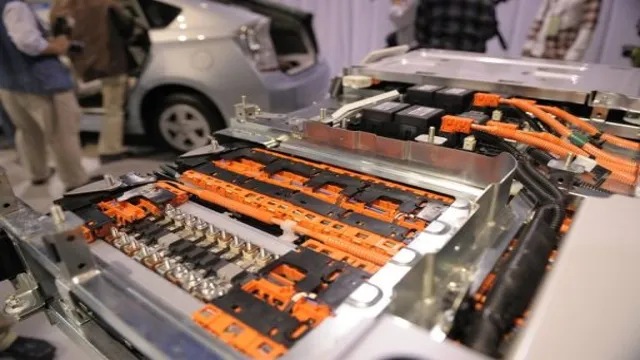
Reduced Emissions
Reduced emissions One of the major benefits of using an electric car as a house battery is reduced emissions. As we all know, conventional cars emit harmful gases that contribute to climate change. Electric cars, on the other hand, are powered by electricity that is usually generated from renewable sources such as solar and wind energy.
By using an electric car as a house battery, you can store excess energy from your solar panels or wind turbines, and use it to power your home and even sell it back to the grid when demand is high. This means that you can reduce your reliance on fossil fuels and help to reduce global carbon emissions. Furthermore, electric cars emit zero emissions while driving, which means that you can significantly reduce your carbon footprint by using an electric car as your primary mode of transportation.
By choosing an electric car as a house battery, you not only save money on energy costs but also help to create a cleaner and more sustainable future for us all.
Backup Power
electric car, house battery If you own an electric car, did you know that you can use it as a backup power source for your home? That’s right, by using a technology called vehicle-to-home (V2H), you can connect your electric car to your home and use it to power your appliances during a power outage. Not only is this a great way to save money on electricity bills, but it also reduces your carbon footprint and helps you become more self-sufficient. Imagine you’re in the middle of a storm, and the power goes out.
Instead of being left in the dark, you can plug your electric car into your house and continue to power your lights, fridge, and other essentials while you wait for the power to return. Plus, you can even sell excess power back to the grid, earning some extra cash while also helping the environment. So, if you’re looking for a way to increase your home’s resilience and reduce your carbon footprint, consider investing in an electric car and using it as a house battery with V2H technology.
How to Use an Electric Car as a House Battery
If you’re looking to save on your electricity costs and reduce your carbon footprint at the same time, then utilizing your electric car as a house battery might be the perfect solution for you. By using special equipment, you can easily convert the battery of your electric car into a power source for your home. This process is called vehicle-to-home or V2H.
By setting up a V2H system, you can enjoy the benefits of having backup power during blackouts or emergencies without relying on traditional fossil fuel generators, which can be expensive and polluting. Moreover, you can sell the excess electricity back to the grid when the demand is high, thus earning some extra income. With the ever-increasing number of electric car models on the market and the decreasing cost of home battery storage, utilizing your electric vehicle as a house battery has never been easier or more economical.
Installation
To use an electric car as a house battery, you’ll need a home charging unit and an inverter. First, make sure your car’s battery is fully charged. Then, connect the inverter to the car’s charging port.
This will convert the car’s DC power into AC power that can be used to power your home. Next, connect the inverter to your home’s electrical panel. This will allow the power from the car’s battery to flow into your home’s wiring.
Finally, turn off the power to your home and turn on the inverter. Your house should now be powered by your electric car’s battery. Keep in mind that you will need to monitor your car’s battery level and recharge it as needed.
Using an electric car as a house battery is an innovative way to save on energy costs and reduce your carbon footprint. Plus, it’s a great backup power source in case of a blackout.
Charging and Discharging
If you own an electric car, an excellent way to save money on your electricity bill and reduce your carbon footprint is to use your car as a house battery. This practice involves charging your vehicle during times when electricity rates are low, typically at night, and using the car’s battery to power your home during peak hours, when rates skyrocket. You will need a specialized device, called a bi-directional charger, to connect your car to your home’s power system.
The charger automatically manages the charging and discharging of your battery, so you don’t have to worry about it. This way, you can not only save money but also be part of the solution to the world’s energy challenges. Using an electric car as a house battery is a smart way to store clean energy when it’s abundant and use it when it’s needed.
It’s like having a giant storage tank in your garage that you can use to power your home. So why not take advantage of your car’s battery power and reduce your environmental impact while saving money at the same time?
Examples of Electric Car as House Battery
Electric car as house battery can be a cost-effective and sustainable solution for powering homes. One great example is the Tesla Powerwall, which can store solar energy generated during the day and supply power to the house at night. Another example is the Nissan Leaf, which can be used as a backup power source during power outages.
With the right equipment, it’s possible to convert the energy stored in the car’s battery into usable electricity for the home. This not only reduces dependence on the grid but also minimizes carbon emissions. Moreover, it helps decrease electricity bills and provides a reliable source of power during emergencies.
However, it’s vital to note that the capacity of the electric car battery should be enough to handle the home’s energy needs. Additionally, the installation process should be carried out by qualified professionals to ensure safety and efficiency. In conclusion, using an electric car as a house battery is an innovative and sustainable solution that can benefit both the environment and homeowners.
Tesla Powerwall
Tesla Powerwall, electric car, house battery Have you ever thought about using your electric car as a backup battery for your home? It’s completely possible, and it’s even an option actively being explored by Tesla with their Powerwall system. By connecting your electric car to your home’s electrical system, you can use the battery to power your house during a power outage or peak demand times, instead of relying on the grid. This is not only a great way to save money on your electricity bill but also helps reduce your carbon footprint.
The Tesla Powerwall is designed to store energy generated by solar panels, but it’s also compatible with electric cars. By using your electric car as a house battery, you can ensure that your energy storage system is always topped up and ready to go. How convenient is that? It’s like having a backup generator that you can also drive to the grocery store.
Nissan Leaf to Home System
Electric car as house battery Electric cars are not just a means of transportation but can be used as a house battery too. One of the most famous examples is the Nissan Leaf to Home System, which allows the car batteries to be used as an electricity source for the house. By using this technology, the Nissan Leaf can be charged with a solar panel during the day and can then be used to power the house during peak hours.
This system not only helps to reduce the maintenance cost of the Nissan Leaf but also ensures uninterrupted power supply during emergencies. The main benefit of using an electric car as a house battery is that it reduces energy costs and carbon footprint. It is also an excellent way to balance the energy grid during peak hours, providing additional revenue to households that have excess energy.
Despite being a good alternative to traditional gasoline-fueled cars, electric cars as house batteries are not yet widespread due to the high initial cost of electric cars and the technological limitations of existing grid infrastructure. However, with more research and development, electric cars can become an indispensable part of the energy grid in the future.
Conclusion
In conclusion, the concept of using electric cars as house batteries is a brilliant and clever idea. Not only does it promote sustainable living and renewable energy, but it also provides a practical solution to energy storage and distribution. Plus, it’s a great way to give your old car a new purpose in life! So, let’s charge up our homes with electric car batteries and power up towards a brighter, greener future.
“
FAQs
What is an electric car as a house battery?
An electric car can be used as a house battery by adding a bidirectional charger and power inverter, allowing the car to store excess energy from the grid or solar panels and discharge it to power the home.
How much energy can be stored in an electric car used as a house battery?
The amount of energy stored in an electric car used as a house battery depends on the car’s battery capacity. On average, an electric car with a 60 kWh battery can power a home for approximately two days.
What are the advantages of using an electric car as a house battery?
Using an electric car as a house battery can save money on energy bills, provide backup power during outages, and reduce the carbon footprint of a home by utilizing renewable energy sources.
How do I install a bidirectional charger and power inverter for an electric car house battery?
It is recommended to hire a licensed electrician experienced with EV chargers and power inverters to install the necessary equipment for using an electric car as a house battery. The installation will involve wiring the house, inverter, and charger to create a closed circuit system.



